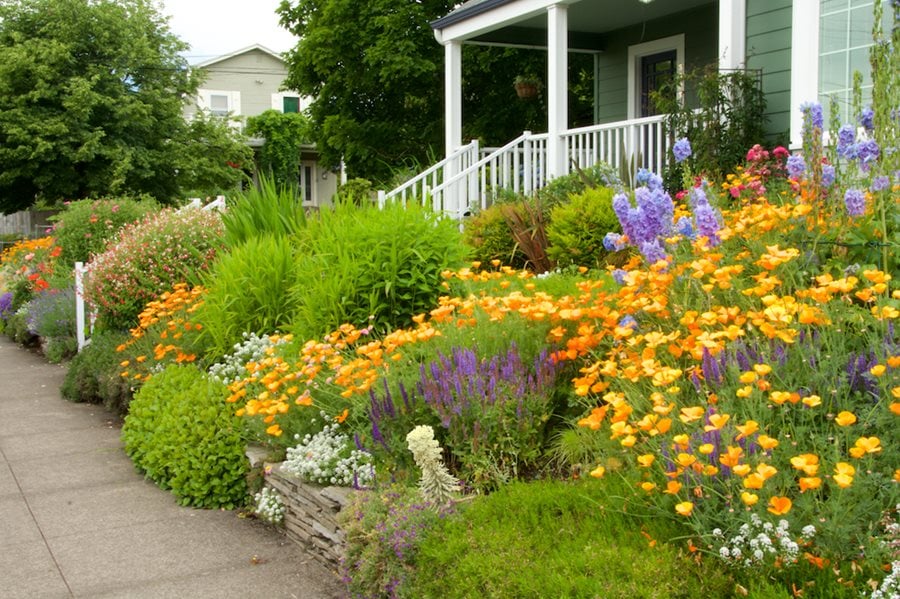Water-friendly techniques for Steep hill landscaping plants.
Water-friendly techniques for Steep hill landscaping plants.
Blog Article
Accomplish a Beautiful Exterior Oasis With Thoughtful Steep Hill Landscape Design Solutions
Changing a steep hill right into a fascinating outdoor sanctuary provides distinct challenges that need ingenious landscape design options. By attending to issues such as disintegration control and availability, one can create an unified blend of elegance and performance. Strategies such as terracing, the setup of retaining wall surfaces, and the selection of indigenous plants play vital roles in this procedure. Additionally, including water functions can better improve the landscape's attraction. Comprehending the details of these elements is crucial for achieving an absolutely cohesive and inviting setting. What techniques will best match your hillside's certain characteristics?
Comprehending Steep Hill Challenges
Landscaping on steep hillsides offers one-of-a-kind challenges that require cautious consideration and tactical planning. The inclination of the terrain can lead to concerns such as dirt disintegration, water overflow, and limited ease of access, all of which must be resolved to develop a practical and visually pleasing outdoor room.
Among the main interest in high hill landscaping is disintegration, which can result from hefty rains or incorrect drain. This not only influences plant health and wellness but can additionally endanger the stability of the incline. Carrying out effective disintegration control procedures, such as planting ingrained plants or utilizing compost, is necessary in protecting the honesty of the landscape.

Designing With Terracing Techniques
To minimize the difficulties presented by steep hills, integrating terracing techniques can be an effective service. This design approach transforms a sloped landscape right into a collection of level, level areas, creating a visually striking and useful exterior room. Terracing not just assists to stop soil erosion yet additionally assists in much better water drainage, which is essential in maintaining the wellness of plants and the security of the hillside.
When developing terraces, mindful factor to consider of the slope's angle and the dirt kind is vital. Each terrace should be purposefully put to optimize sunlight exposure while decreasing the danger of runoff. Making use of indigenous plants on each level can boost biodiversity, promote sustainability, and reduce upkeep requirements. Additionally, integrating pathways in between terraces can boost availability and encourage expedition of the landscape.
Terraced gardens can offer multiple objectives, including veggie production, decorative display screens, or outside seats areas. By making use of materials that blend sympathetically with the surrounding atmosphere, the terracing can boost the overall visual appeal of the building. Eventually, thoughtful terracing changes high hills right into functional, lovely spaces that invite communication and enjoyment.
Executing Preserving Walls
When faced with the obstacles of steep terrain, carrying out his explanation preserving walls can offer both architectural assistance and aesthetic enhancement to a landscape. These wall surfaces offer to avoid soil disintegration, maintain slopes, and create flat locations for horticulture or entertainment use. Steep hill landscaping. By successfully taking care of water drainage and reducing soil motion, preserving wall surfaces protect your landscape investment while enhancing security

Professional installment is important to guarantee the long life and efficiency of retaining wall surfaces. Proper water drainage systems should be included to ease hydrostatic pressure, stopping architectural failure. Consulting with landscape specialists will make sure that the layout aligns with your total vision while sticking to regional laws.
Picking Indigenous Plants
Selecting native plants for your landscape layout offers many ecological and visual advantages. Steep hill landscaping. Native plants are adapted to the neighborhood environment and soil problems, needing less water and maintenance compared to non-native types. This flexibility not just preserves sources yet additionally promotes a healthier ecological community, as native plants support local wild animals, consisting of pollinators such as and butterflies
Incorporating indigenous plants into your steep hill landscaping can improve dirt security, lowering erosion and promoting a well balanced community. Deep-rooted indigenous plants aid secure the dirt, making them optimal for sloped locations. These plants typically exhibit lively colors and varied structures, developing an aesthetically enticing landscape that integrates with the surrounding environment.
When picking indigenous plants, consider their growth habits, seasonal interest, and compatibility with other species. Organizing plants with comparable water and sunshine needs can cause a much more natural design, while also streamlining upkeep. By picking indigenous plants, you not only cultivate a lasting outdoor sanctuary however also contribute favorably to the neighborhood biodiversity, ensuring that your landscape flourishes for years to find.
Incorporating Water Functions
Integrating water functions into your high hillside landscaping can significantly improve both the visual charm and eco-friendly functionality of the space. The noise of moving water develops a calm ambience, while aesthetically, it can serve as a prime focus that draws the eye and includes deepness to the landscape.
When picking water attributes, consider choices that enhance the natural contours of your hill. Waterfalls, as an example, can cascade the incline, creating visual interest and advertising healthy and balanced water drainage. Fish ponds can likewise be integrated into the style, encouraging neighborhood wildlife and offering habitats for numerous species.
Moreover, the positioning more info here of plants around these functions is essential. Indigenous marine plants not only improve the beauty of the water function yet also add to its eco-friendly balance by filtering system toxins and providing food for regional animals.
Maintenance is another crucial variable; guarantee that your water attribute is designed for simple maintenance. A properly built function will certainly call for minimal intervention, enabling you to appreciate the beauty and serenity it uses without too much labor. Ultimately, thoughtfully incorporated water functions can transform your steep hillside landscape right into an exciting exterior sanctuary.
Conclusion
In verdict, changing additional hints a high hillside into a beautiful exterior sanctuary requires thoughtful landscaping strategies that address disintegration control and access. The combination of terracing methods, the implementation of keeping wall surfaces, and the choice of native plants are essential parts of efficient design.
Report this page